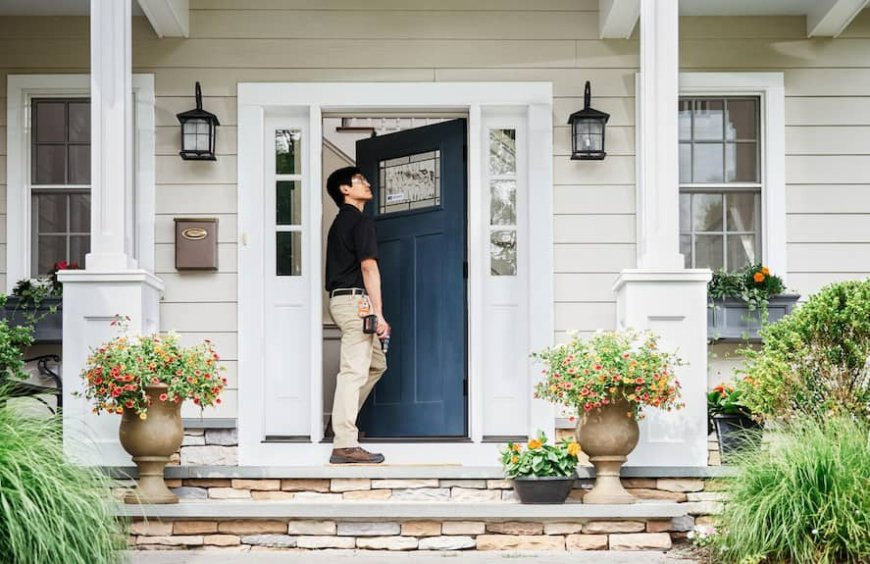Interior Doors Manufacturer: A Comprehensive Guide to Quality and Design

Interior doors play a pivotal role in defining the aesthetics and functionality of spaces within a home or commercial building. As essential elements of interior design, these doors not only provide privacy and security but also contribute significantly to the overall decor. This article explores the world of interior doors manufacturers, examining their product offerings, materials used, design trends, and the factors to consider when selecting the right doors for your space.
Types of Interior Doors
1. Hollow Core Doors
Hollow core doors are lightweight and cost-effective, making them a popular choice for residential use. They consist of a honeycomb core sandwiched between two layers of wood or composite materials. These doors are easy to install and can be finished with various veneers.
2. Solid Core Doors
Solid core doors provide greater durability and sound insulation compared to hollow core options. Constructed from solid wood or a composite core, they offer a heavier feel and enhanced security, making them suitable for bedrooms and bathrooms.
3. Panel Doors
Panel doors feature a classic design with multiple panels that can be raised or flat. They are available in various styles, from traditional to modern, and can be customized with different materials, finishes, and colors.
4. French Doors
French doors are characterized by their glass panels, allowing natural light to flow between spaces while maintaining a visual separation. They are often used as entryways to patios or between living areas, adding elegance to any home.
5. Bi-fold Doors
Bi-fold doors are a versatile option that opens by folding back against the wall. Ideal for closets or wide openings, they maximize space and enhance accessibility.
Materials Used in Interior Doors
1. Wood
Wood is the traditional choice for interior doors, offering natural beauty and warmth. Various species, such as oak, maple, and cherry, provide different aesthetics and durability levels. Solid wood doors are particularly favored for their longevity.
2. MDF (Medium-Density Fiberboard)
MDF is a popular engineered material that offers a smooth surface for painting and can be molded into intricate designs. It’s often used in panel doors and is more affordable than solid wood.
3. Steel
Steel doors are primarily used in commercial settings but are also gaining popularity in residential spaces for their security features and modern aesthetic. They are durable and can be insulated for energy efficiency.
4. Glass
Glass is commonly used in French doors and as inserts in solid doors. It allows for light penetration while offering privacy through frosted or patterned glass options.
Trends in Interior Door Design
1. Minimalist Aesthetic
The minimalist trend emphasizes clean lines and simple designs. Flat panel doors and smooth finishes complement modern interiors, focusing on functionality and subtle elegance.
2. Bold Colors and Finishes
While traditional white and wood finishes remain popular, many homeowners are embracing bold colors for their interior doors. Deep blues, greens, and even black can make a striking statement in a room.
3. Textured Surfaces
Textures such as shiplap, barn door designs, and raised paneling are gaining traction, adding depth and character to spaces. Textured doors can serve as focal points within the overall decor.
4. Smart Technology Integration
Smart doors equipped with electronic locks and integrated security systems are becoming more common, providing added convenience and security in modern homes.
Choosing the Right Interior Doors
1. Assess Your Needs
Consider the purpose of the door. For high-traffic areas, durability and ease of maintenance should be prioritized. For bedrooms and bathrooms, sound insulation and privacy are essential.
2. Style and Aesthetic
Match the door style with your home’s overall design theme. Whether you prefer traditional, modern, or eclectic styles, ensure that the doors complement your existing decor.
3. Budget Considerations
Interior doors come in a wide range of price points. Determine your budget early on and consider factors such as material, design complexity, and brand reputation when making your choice.
4. Manufacturer Reputation
Select a reputable interior doors manufacturer known for quality craftsmanship and customer service. Research reviews and testimonials to ensure you are making a wise investment.
Conclusion
The choice of interior doors significantly impacts the functionality and aesthetic appeal of a space. With a wide variety of styles, materials, and manufacturers available, homeowners and designers have ample options to create beautiful and functional interiors. By understanding the types of doors, current design trends, and factors to consider, you can make informed decisions that enhance your living or working environment.
